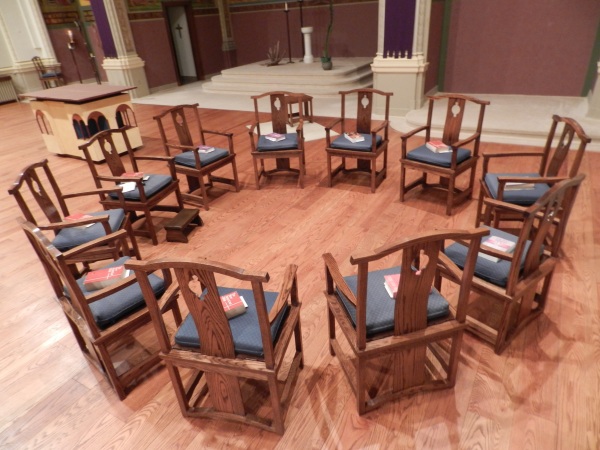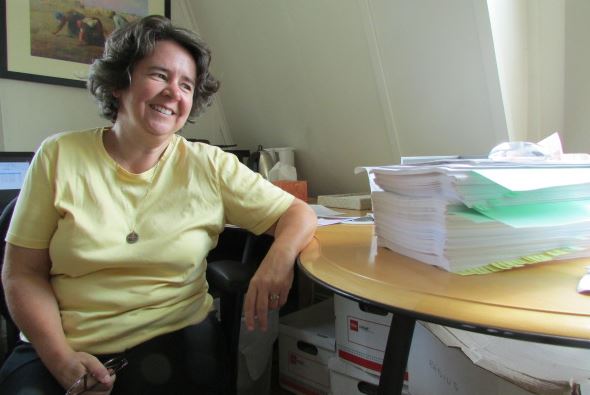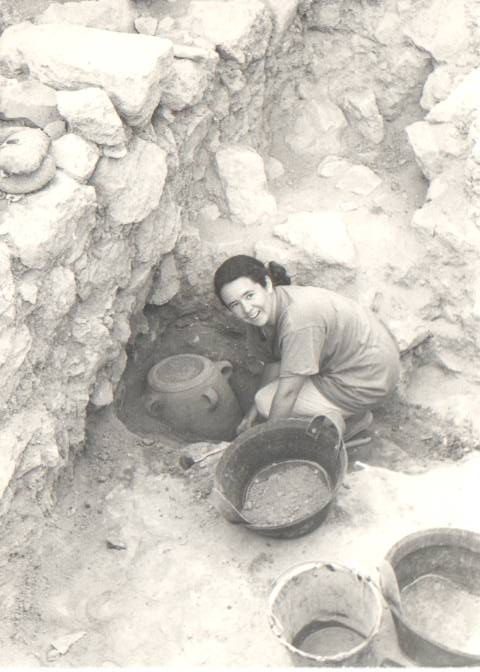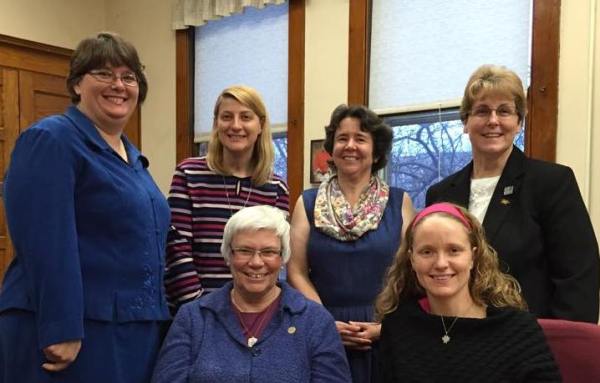I had one of those days this afternoon. I was at the Sheil Catholic Center for Cheap Lunch ($3.00 for chips, a burger, salad, dessert and a soda!) and to talk to a few people about upcoming events. Since I wasn’t certain how long I was going to be there, I decided I would use one of my parking permits, which allow me to park on the street near Northwestern for more than two hours. After eating lunch and stopping by a few offices, I headed back to my car and realized I’d lost my keys. Panic ensued as I retraced my steps and enlisted about half the Sheil staff to help me look for my keys.

The parking permit appropriately displayed in the windshield of my car. The cause of the panic and one of the things that alleviated it somewhat.
I was unable to find them at Sheil and finally headed back to my car, thinking I would pay attention to see if I had dropped them along the way, but if not, I’d take the el home and get my spare set to pick up the car. “At least,” I observed to the women who had been helping me, “I hung the permit in my windshield so I’m not worried about getting a ticket.”
About half a block from Sheil, I may have actually slapped my forehead as I realized, “I locked my keys in my car.” After I parked, I started filling out the parking permit, and took the keys out of the ignition, put them down, and locked the car door when I got out. And, indeed, when I got back to the car, there the keys were, on the seat of the car. With my panic at having missing keys gone, I called Sr. Jane and asked her to come pick me up, so I could come home, find my extra key and head back up to Evanston. She pointed out that there are spare car keys in the subprioress’s office and, after I phoned Sr. Patti, Jane got the keys to my car and headed to Evanston to rescue me.

My key. Exactly where I left it. On the front seat of my locked car.
While I don’t want to lose my keys again, the afternoon was a wonderful demonstration for me of the many ways I am supported by community and how much I need community to get through my daily life. No one made me feel stupid or helpless for having lost my keys. Everyone I encountered offered to help in some way–from looking through offices and across the grass to actually finding a spare key and driving up to deliver it to me. While I was nervous about having lost the key, I knew that, in the end, it would be alright and that I would wind up home with the car and in one piece. It’s easy to think that I can do it all alone. This afternoon was a reminder how much I am dependent on–and grateful for–community
















